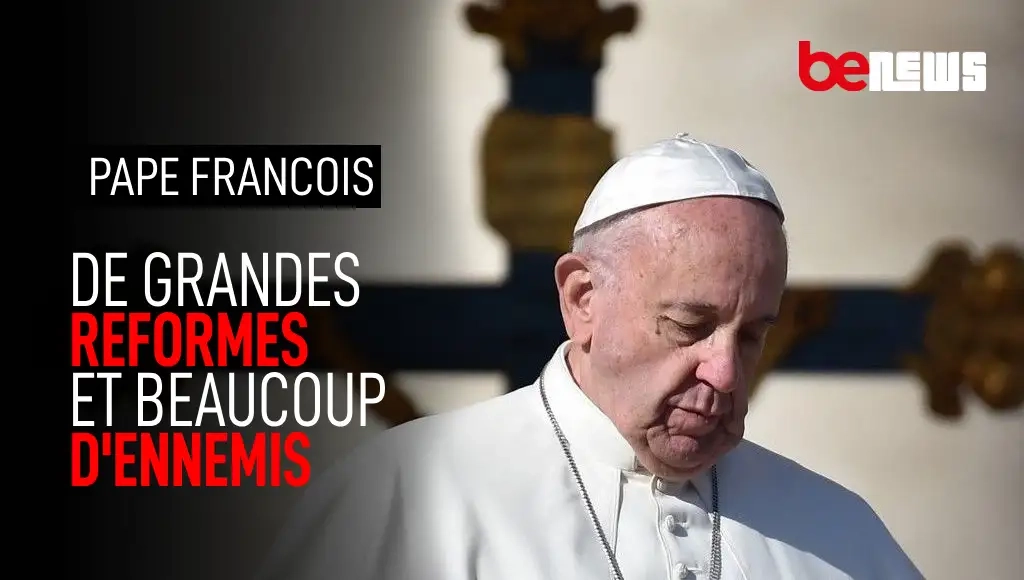Pope Francis: Major Reforms—And Many Enemies
Pope Francis will be remembered in history as a pontiff who profoundly differed from his predecessors. The first pope from the American continent and the first Jesuit to ascend to the Chair of Saint Peter, Jorge Mario Bergoglio quickly set himself apart by challenging Vatican traditions and seeking to give the Catholic Church a more human face.

SUMMARY
From the moment of his election on March 13, 2013, the Argentine cardinal made waves. Little known to the public, he appeared simply on the balcony of St. Peter’s Square and declared: “I come from the end of the world.” He chose the name Francis, in honor of Saint Francis of Assisi—a symbol of poverty and service to the most vulnerable. That choice alone encapsulated his vision: a Church close to the poor and the marginalized.
Rejecting the opulence of the Apostolic Palace, he chose to live on the second floor of the modest Casa Santa Marta, far removed from Vatican luxury. He also declined many of the privileges typically afforded to popes, including the services of personal staff.
A Priority: Migrants and the Excluded
Defending the rights of migrants became one of the defining causes of his papacy. As the son of Italian immigrants, Pope Francis consistently urged the world to welcome refugees “not as numbers, but as people with names, faces, and stories.” He helped elevate this issue to the forefront of Catholic and global consciousness.
Francis also launched a wide-ranging reform of Vatican governance, particularly targeting financial opacity. The Holy See’s economic system—once described as a “maze” of isolated, overlapping structures—was streamlined. He cut staff salaries by 10%, demanded greater presence and accountability, and pushed for the creation of a unified financial oversight body.
Though widely praised, these reforms also sparked fierce resistance within the Church. Many conservative cardinals viewed the shake-up with suspicion, criticizing his direct style and his disregard for tradition and Vatican ceremony.
Pope Francis also took a firm stance against sexual abuse within the Church, officially adopting a zero-tolerance policy. He repeatedly expressed his “sadness,” “pain,” and “shame” over the trauma endured by victims. However, despite real progress, the issue remains a persistent challenge, with unresolved cases and responses sometimes deemed insufficient.
A Beloved—but Divisive—Pope
On sensitive issues like abortion, Francis adopted a more nuanced approach. While upholding the Church’s position, he showed compassion toward women in distress. He also left a lasting impression with his now-famous remark: “Who am I to judge?”—referring to LGBTQ+ individuals. That moment, during his first papal trip, became a symbol of his openness and refusal to condemn.
Yet in breaking with tradition, Pope Francis earned both admiration and fierce criticism. His opponents—some from within the clergy—accused him of disrespecting Church heritage and embracing a style they considered too populist. Still, his papacy left no one indifferent, marked by a sincere desire to refocus the Church on what matters most: humanity, justice, and mercy.


Comments